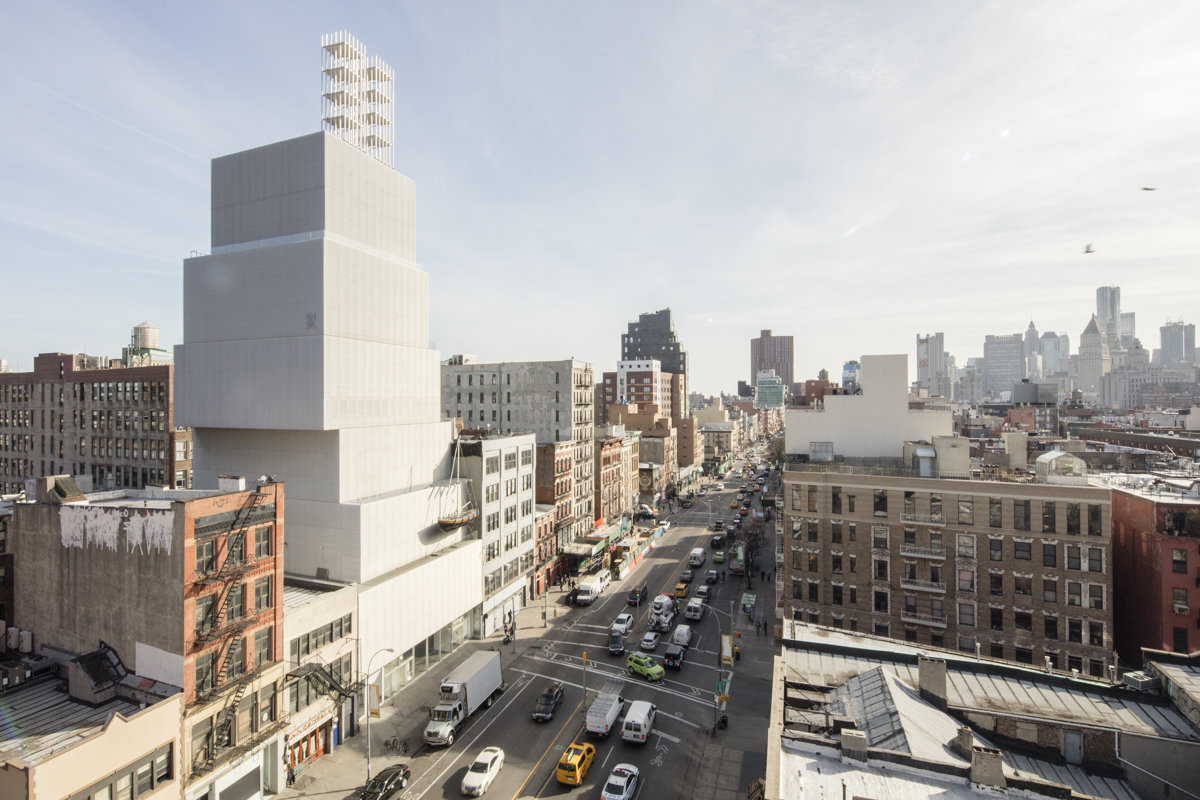NEW MUSEUM OF CONTEMPORARY ART
-
The location context, Lower Manhattan, with its squared blocks and buildings, can be considered as starting point for the Museum image: it replies the boxes surrounding, and stacks them one on top of the other in various sizes and heights, as the plot was a playground for a composition of cubes.
Photo credits: Laurian Ghinitoiu.
By small but significant shifting of the cubes, the building gets dynamicity and an attracting shape, being different but similar to the near constructions.
The program of the Museum consists of four public galleries at the first four floors, which have free and flexible spaces for exhibitions; a “white box” auditorium in the basement, Education Center at the 5th floor, offices at 6th, a multi-purpose room at the 7th. By shifting the boxes, all galleries get natural illumination, combined with artificial, and the offices and the private locals on the top floors get terraces and opening views to the cityscape.
It is in that way that the project shows its concept: by simple repeated shifting, the intention of the building is clearly readable from outside, and combines a convincing language with the need of natural light from top: all at once, with one operation, the project shows its force.
Wanting to be a light and clean object in the massive Manhattan cityscape, the materials and the façade appearance play a relevant role. The choice of a layer of anodized aluminium mesh on top of the white walls is not new and unknown to most of architects. But in the Museum it is used as a wrapped skin on all vertical surfaces, as a continuous blurring layer, that gives different light reflections and hides the offices windows, doors and balustrades of the terraces. The result is an elegant, light and white succession of surfaces, without any interruption or contamination by other elements: a semi-transparent dress for the shifting body of the building.
Evidently, at night the Museum shows life from the inside with the artificial lights through the hidden openings, enhancing the gaps between the volumes and giving more lightness to the massive building.
Inside, the Museum keeps its lightness by the white surfaces and ceilings. The steel structure of the perimeter walls supports the floors and sets them free from any column.
The plan, with an off- centred core and free space all around, efficient and flexible, confirms the clearness of the concept.
1870 Projects















